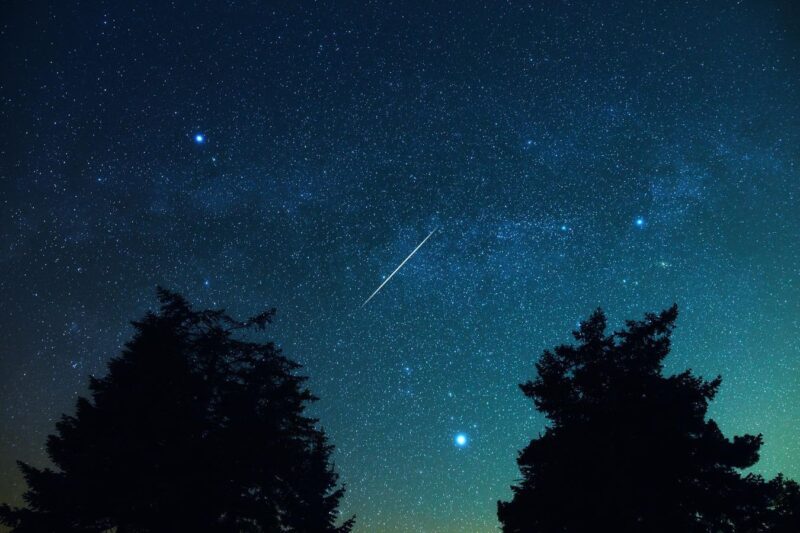The Leonid meteor shower this week brings its annual burst of “shooting stars.”
getty
Each week, I pick out North America’s celestial highlights for the week ahead (which also apply to mid-northern latitudes in the Northern Hemisphere). Check my main feed for more in-depth articles on stargazing, astronomy, eclipses and more.
The Night Sky This Week: Nov. 10-16, 2025
After last week’s bright supermoon, our natural satellite wanes, passing close to a famous open star cluster, then slipping past Leo and Virgo before vanishing into a crescent. Meanwhile, the Leonid meteor shower brings its annual burst of “shooting stars.” Here’s everything you need to know about stargazing and astronomy this week.
Monday, Nov. 10: Moon And The Beehive Cluster
Around midnight, the 60%-lit waning gibbous moon will shine close to the Beehive Cluster (M44) in the constellation Cancer. This open star cluster will be really faint in moonlight, so binoculars will hugely help. In dark skies, M44 is visible to the naked eye as a misty patch. If you can’t see M44 tonight, you now know where it — and you can return to it later in the week.
Wednesday, Nov. 12: Last Quarter Moon
The moon reaches its Last Quarter phase, half-lit and rising around midnight. That means the evenings are darker and excellent for stargazing, with the moon not interfering until late.
Thursday, Nov. 13: Crescent Moon And Regulus
Stellarium
Thursday, Nov. 13: Crescent Moon And Regulus
Before dawn, look east to spot a 37%-lit waning crescent moon just four degrees from Regulus, the brightest star in Leo. Regulus lies almost directly on the ecliptic — which the moon’s orbital path often passes close to and intersects — so it’s often paired with the moon or planets.
Sunday, Nov 16-Monday, Nov. 17: Leonid Meteor Shower Peaks
The Leonids reach their peak tonight, bringing up to 15 meteors per hour under dark skies. Originating from comet 55P/Tempel-Tuttle, Leonids are fast and occasionally leave glowing trails. Though not a “storm year,” it’s a good night to go stargazing — though maximum activity is most likely after midnight. Find a dark site, wrap up warmly, and look broadly overhead to maximize your chances.
The times and dates given apply to mid-northern latitudes. For the most accurate location-specific information, consult online planetariums like Stellarium.
Wishing you clear skies and wide eyes.









